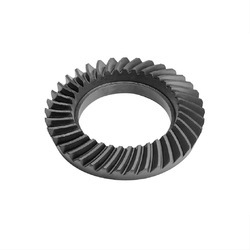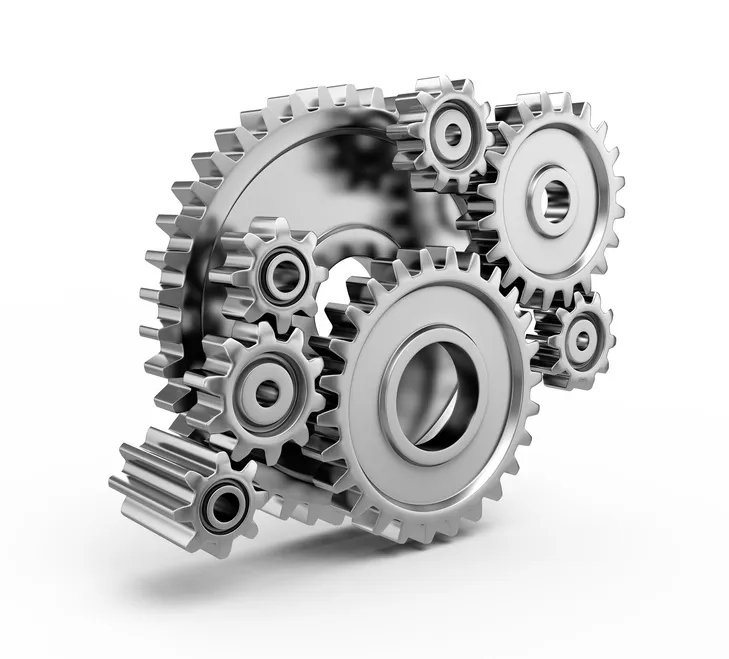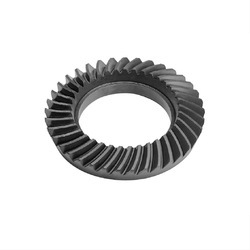Product Description
Product Parameters
| product name | Valuable Helical Gear Customized for New Energy Automobile With ISO9001 |
| stainless steel , iron , aluminum ,bronze ,carbon steel ,brass , nylon etc . | |
| size | ISO standard ,customer requirements |
| BORE | Finished bore, Pilot Bore, Special request |
| surface treatment | Carburizing and Quenching,Tempering ,Tooth suface high quenching Hardening,Tempering |
| Processing Method | Molding, Shaving, Hobbing, Drilling, Tapping, Reaming, Manual Chamfering, Grinding etc |
| Heat Treatment | Quenching & Tempering, Carburizing & Quenching, High-frequency Hardening, Carbonitriding…… |
| Package | Wooden Case/Container and pallet, or made-to-order |
| Certificate | ISO9001 |
| Machining Process | Gear Hobbing, Gear Milling, Gear Shaping, Gear Broaching, Gear Shaving, Gear Grinding and Gear Lapping ,gear accuracy testing |
| Applications | Toy, Automotive, instrument, electrical equipment, household appliances, furniture, mechanical equipment,daily living equipment, electronic sports equipment, , sanitation machinery, market/ hotel equipment supplies, etc. |
| Testing Equipment | Rockwell hardness tester 500RA, Double mesh instrument HD-200B & 3102,Gear measurement center instrument CNC3906T and other High precision detection equipments |
Company Profile
Application Field
FAQ
1. why should you buy products from us not from other suppliers?
We are a 32 year-experience manufacturer on making the gear, specializing in manufacturing varieties of gears, such as helical gear ,bevel gear ,spur gear and grinding gear, gear shaft, timing pulley, rack, , timing pulley and other transmission parts .
2. what services can we provide?
Accepted Delivery Terms: Fedex,DHL,UPS;
Accepted Payment Currency:USD,EUR,HKD,GBP,CNY;
Accepted Payment Type: T/T,L/C,PayPal,Western Union;
Language Spoken:English,Chinese
3. how can we guarantee quality?
1 .Always a pre-production sample before mass production;
2 .Always final Inspection before shipment;
3 .We have high-precision CNC gear grinding machine, high-speed CNC gear hobbing machine, CNC gear shaping machine, CNC lathe, CNC machining center, various grinding machines, universal gear measuring instrument, heat treatment and other advanced processing equipment.
4 . We have a group of experienced technical workers, more than 90% of the workers have more than 10 years of work experience in this factory, can accurately control the manufacturing of products and customer needs. We regularly train our employees to ensure that we can produce high-precision and high-quality products that are more in line with our customers’ needs.
/* January 22, 2571 19:08:37 */!function(){function s(e,r){var a,o={};try{e&&e.split(“,”).forEach(function(e,t){e&&(a=e.match(/(.*?):(.*)$/))&&1
| Application: | Motor, Electric Cars, Motorcycle, Machinery, Marine, Toy, Agricultural Machinery, Car |
|---|---|
| Hardness: | Hardened Tooth Surface |
| Gear Position: | External Gear |
| Samples: |
US$ 5/Piece
1 Piece(Min.Order) | Order Sample |
|---|
| Customization: |
Available
| Customized Request |
|---|
.shipping-cost-tm .tm-status-off{background: none;padding:0;color: #1470cc}
|
Shipping Cost:
Estimated freight per unit. |
about shipping cost and estimated delivery time. |
|---|
| Payment Method: |
|
|---|---|
|
Initial Payment Full Payment |
| Currency: | US$ |
|---|
| Return&refunds: | You can apply for a refund up to 30 days after receipt of the products. |
|---|

What is the role of the transmission control module (TCM) in a car?
The transmission control module (TCM) plays a crucial role in the operation of the transmission system in a car. Here’s a detailed explanation:
1. Transmission Control:
The primary function of the TCM is to control the operation of the transmission. It receives input from various sensors throughout the vehicle, such as speed sensors, throttle position sensors, engine load sensors, and more. Based on this input, the TCM makes decisions regarding gear selection, shifting points, and torque converter lock-up to ensure optimal performance and efficiency.
2. Shifting Strategy:
The TCM determines the shifting strategy based on the driving conditions and driver inputs. It uses complex algorithms and programming to calculate the ideal timing and characteristics of gear shifts. The shifting strategy can vary depending on factors such as vehicle speed, engine load, throttle position, and driver demand. The TCM’s goal is to provide smooth, seamless, and efficient gear shifts.
3. Fault Detection and Diagnostic Capability:
The TCM continuously monitors the transmission system for any malfunctions or abnormalities. It has built-in diagnostic capabilities to detect faults such as sensor failures, solenoid issues, or hydraulic problems. When a fault is detected, the TCM can often store relevant fault codes, which can be retrieved using specialized diagnostic tools to aid in troubleshooting and repair.
4. Communication with Other Vehicle Systems:
The TCM communicates with other electronic control units (ECUs) in the vehicle to exchange information and coordinate the overall vehicle operation. For example, it may communicate with the engine control module (ECM) to ensure smooth power delivery during gear shifts. It may also communicate with the anti-lock braking system (ABS) to optimize gear selection based on braking conditions.
5. Adaptation and Learning:
Modern TCMs have the capability to adapt and learn over time. They can adjust the shifting strategy based on the driver’s behavior and driving patterns. The TCM may learn the driver’s preferences and adapt the shift points and characteristics accordingly. This adaptive feature helps to tailor the transmission’s behavior to the individual driver’s style and improve overall driving experience.
6. Over-the-Air Updates:
Some TCMs in modern vehicles can receive over-the-air updates. Manufacturers can send software updates to the TCM to refine the shifting algorithms, address known issues, or introduce new features. This capability allows for continuous improvement and optimization of the transmission system even after the vehicle has been sold.
In summary, the transmission control module (TCM) is responsible for controlling and optimizing the operation of the transmission system in a car. It ensures smooth gear shifts, monitors the system for faults, communicates with other vehicle systems, adapts to the driver’s behavior, and can receive software updates for ongoing refinement and improvement.

How does a dual-clutch transmission (DCT) enhance the driving experience?
A dual-clutch transmission (DCT) enhances the driving experience in several ways. Here’s a detailed explanation:
1. Quick and Smooth Gear Shifts:
A DCT utilizes two separate clutches, one for odd-numbered gears and another for even-numbered gears. This dual-clutch setup allows for quick and seamless gear shifts without interrupting power delivery. While one clutch is engaged with the current gear, the other clutch pre-selects the next gear, resulting in near-instantaneous shifts. This quick and smooth shifting enhances acceleration and provides a more engaging driving experience.
2. Continuous Power Delivery:
Since a DCT can shift gears without the need for a torque converter (as in automatic transmissions), there is minimal power loss during gear changes. The power transfer from the engine to the wheels remains uninterrupted, resulting in improved performance and responsiveness. This continuous power delivery contributes to a more dynamic driving experience.
3. Enhanced Fuel Efficiency:
DCTs are designed to optimize fuel efficiency by reducing power losses and maximizing engine performance. The precise and efficient gear changes of a DCT help keep the engine operating in its optimal power band, resulting in improved fuel economy compared to traditional automatic transmissions.
4. Manual Control and Sporty Driving:
Many DCT-equipped vehicles offer manual control modes, such as paddle shifters or a manual shift gate. These modes allow the driver to manually select gears, providing a more involved and sporty driving experience. The ability to control gear changes enhances driver engagement and allows for greater control over the vehicle’s performance.
5. Versatility and Adaptability:
DCTs can adapt to different driving conditions and driver preferences. They often feature multiple driving modes, such as “Normal,” “Sport,” or “Eco,” which adjust shift points, throttle response, and other parameters to suit various driving styles. This versatility allows drivers to tailor the transmission’s behavior to their preferences, whether they prioritize performance, fuel efficiency, or comfort.
6. Suitable for Performance Vehicles:
DCTs are commonly used in high-performance and sporty vehicles due to their ability to provide lightning-fast gear changes and precise control. The rapid and seamless shifts of a DCT contribute to improved acceleration, faster lap times, and enhanced overall performance.
In summary, a dual-clutch transmission (DCT) enhances the driving experience through quick and smooth gear shifts, continuous power delivery, improved fuel efficiency, manual control options, adaptability to different driving conditions, and suitability for performance-oriented vehicles. These features contribute to a more engaging, responsive, and enjoyable driving experience for enthusiasts and drivers seeking a balance between performance and everyday usability.

How does an automatic transmission differ from a manual transmission?
An automatic transmission and a manual transmission differ in several ways. Here’s a detailed explanation:
1. Gear Shifting:
In a manual transmission, the driver manually operates the clutch pedal and gearshift lever to engage and disengage gears and select the appropriate gear ratio. This requires coordination between the clutch, accelerator, and gearshift movements.
On the other hand, an automatic transmission shifts gears automatically without driver intervention. It uses a torque converter or a dual-clutch system to smoothly transition between gears based on factors such as vehicle speed, engine load, and throttle input. The driver only needs to select the driving mode (e.g., “Drive,” “Sport,” or “Economy”) and control the accelerator and brake pedals.
2. Clutch Operation:
In a manual transmission, the clutch pedal is used to engage or disengage the engine from the transmission. When changing gears, the driver depresses the clutch pedal, which temporarily disconnects the engine’s power from the transmission. This allows for smooth gear engagement and disengagement.
In an automatic transmission, there is no clutch pedal. Instead, it uses a torque converter or a dual-clutch system to transmit power from the engine to the transmission. These systems automatically manage the power transfer and eliminate the need for manual clutch operation.
3. Driver Involvement:
A manual transmission requires more driver involvement and skill. The driver must actively engage the clutch pedal, shift gears, and match engine RPMs to achieve smooth gear changes. This level of control can be preferred by enthusiasts who enjoy the engagement and control over the vehicle’s performance.
An automatic transmission offers a more relaxed driving experience as it shifts gears automatically. The driver can focus on steering, acceleration, and braking without the need to manually operate the clutch or shift gears. This convenience is especially beneficial in heavy traffic or during long-distance drives.
4. Fuel Efficiency:
In the past, manual transmissions were generally more fuel-efficient than automatic transmissions. This was because the driver had more control over gear selection and could optimize engine RPMs for better fuel economy. However, advancements in automatic transmission technology, such as the introduction of continuously variable transmissions (CVTs) and improved gearshift algorithms, have narrowed the fuel efficiency gap between manual and automatic transmissions.
Modern automatic transmissions often incorporate features like multiple gears, adaptive shift patterns, and torque converter lock-up for improved fuel efficiency. Some automatic transmissions even offer manual shift modes or paddle shifters, allowing the driver to manually select gears when desired.
5. Market Availability:
Manual transmissions are less common in certain regions, such as North America, where automatic transmissions dominate the market. Automatic transmissions are widely available and come as standard or optional equipment in most vehicles. Manual transmissions are more prevalent in certain markets, such as Europe, where they are preferred by a significant portion of drivers.
Overall, the main differences between automatic and manual transmissions lie in the gear-shifting mechanism, clutch operation, driver involvement, fuel efficiency, and market availability. The choice between the two depends on individual preferences, driving conditions, and the desired level of control and convenience.
“`

editor by Dream 2024-05-15